
Q: How can I find out where this mask is from? It is large enough to cover most of the wearer’s face and is made of hand sewn of leather, fabric, sequins and gold thread.
I’ve tried searching photos of masks from asia, south america and africa but can’t find anything that seems similar. There are 3 others with the same coloring, shape and stress on eyes. Cheryl, 755
A: What a lovely piece, and a good example of Indian folk art at its best. I’m not sure from what state in India it comes, or what character in the Ramayana it represents. It may take some effort to find out because there is not much literature available to us. Hopefully one of our readers will offer a comment. A
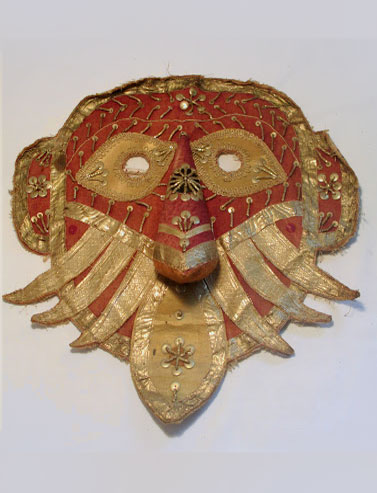
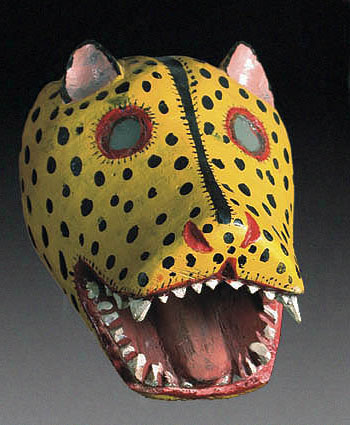
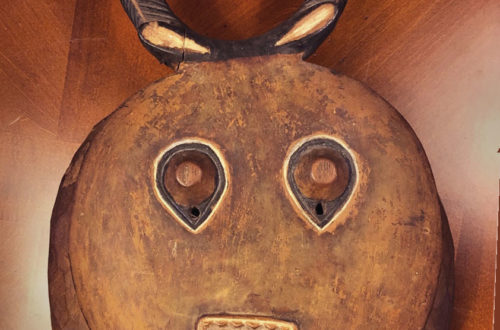
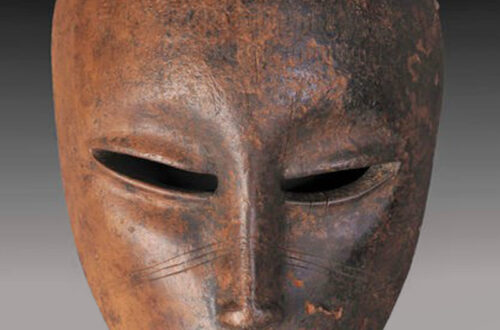
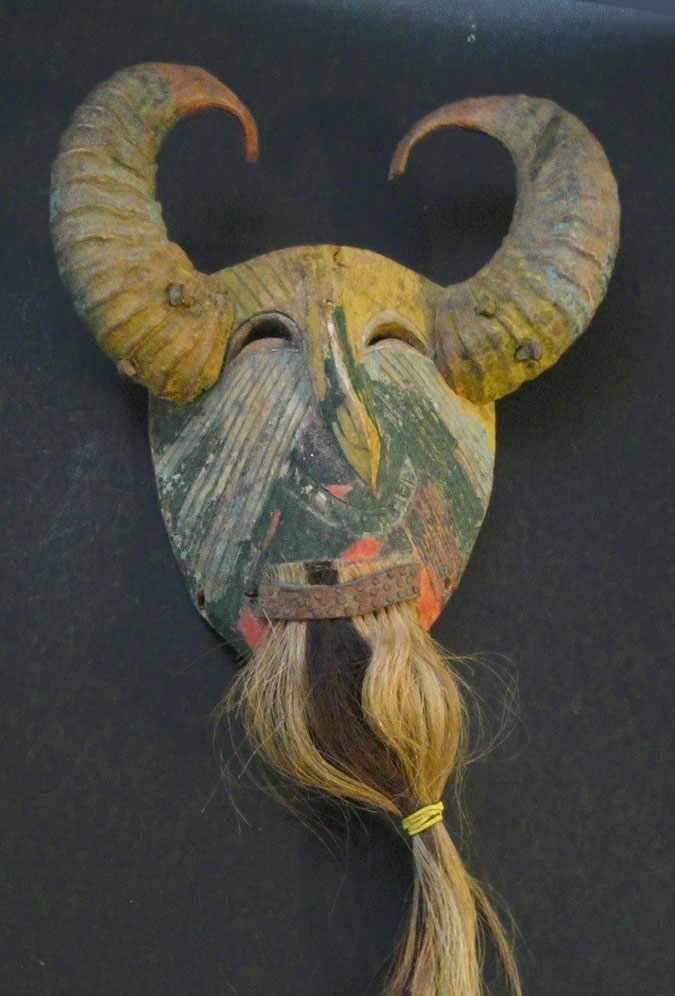
2 Comments
Nate
This is without question a beautiful piece of ethnographic history – I love the aesthetics.
What I find to be the most interesting is that is very closely resembles nearby Nepal masks – Particularly the Lakhe (Lākhey) Masks. Both seem to gravitate to the same shade of red, have the same eye shapes and eye-holes, and both have flared, oversized, out-turned white fangs.The hyper-linked website example, clearly has some Indian influences… It would appear the two regions are close enough to have direct influences on each other. The story of the Lakhe is a fun one too…(Per Wikipedia)
Lākhey (Nepal Bhasa: लाखे, lā-khé) (alternative spellings Lākhe, Lākhay, लाखय्) is a demon in Nepalese folklore. He is depicted with a ferocious face, protruding fangs and mane of red or black hair. Lakhes figure prominently in traditional Newar culture of Nepal Mandala. The Lakhe tradition is found in the Kathmandu Valley and other Newar settlements throughout Nepal.[1] Lakhes are said to be demons who used to live in the forests and later became protectors to the townspeople.[2] A female Lakhe is known as Lasin (लसिं).
Amrish Vaidya
This mask is most certainly a Ramayana mask from Uttar Pradesh in Northern India.Every winter there theatrical performance over 9 evenings of the epic for which it was used.